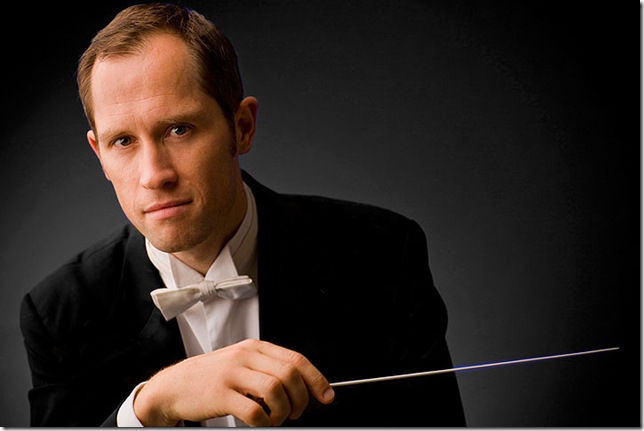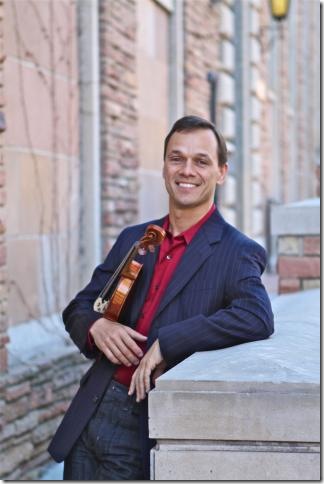An energized and muscular Symphonia Boca Raton opened its new season Sunday afternoon with a spirited appearance by a guest conductor and violin soloist who made the most of a mostly meat-and-potatoes program.
Alastair Willis, who is closing his tenure this coming year as the conductor of the young Illinois Symphony (which plays in Springfield and Bloomington), led the Symphonia in Zoltán Kodály’s most popular work, Dances of Galánta, along with the Beethoven Seventh Symphony (in A, Op. 92) and the Violin Concerto No. 5 (in A, K. 219) of Mozart.
The soloist for the Mozart was the American violinist Charles Wetherbee, an agile and deft player whose precise, highly focused tone gave this reading of the concerto both polish and panache. Aside from some minor intonation issues in the highest registers early on, Wetherbee played this concerto with agreeable spirit in the outer movements, and surpassing tenderness in the slow movement.
Willis, who was just as energetic on the podium, tends to sculpt phrases and dynamics rather than beat time; often, he would stand with arms to his side as the orchestra chugged away, raising them at points of emphasis to make beckoning motions with his hands or pointing to single out an entrance of a section. It reminded me of that scene in Norton Juster’s The Phantom Tollbooth in which Chroma the Great conducts the sunset.
The orchestra played well, supporting Willis’s direction and Wetherbee’s performance admirably in a rendition of the concerto that was at one with the composer’s youth when he wrote it at the tender age of 19. For an encore, Wetherbee played an arrangement by his Carpe Diem String Quartet colleague Korine Fujiwara, a Montana-born violist and composer, of Herman Hupfeld’s 1931 song “As Time Goes By,” made indelible by its use in Michael Curtiz’s 1942 film Casablanca.
Fujiwara’s arrangement is a beauty: She declines to go for easy pop schmaltz and simply uses the tune in a meditative classical fashion, writing a completely idiomatic study of this sentimental confection, and making it work ideally for this format. Wetherbee played it spotlessly, and the large audience at the Roberts Theatre adored it.
Willis, born in the U.S. but raised in a suburb of London, started off the concert by introducing the Kodály in a very BBC-style educational manner, taking the audience through the piece as the orchestra played excerpts to illustrate his points. It was surely helpful for those who didn’t know the piece, and Willis has an engaging, positive manner that makes the audience sit up and listen.
The Dances of Galánta is a very attractive piece with great folkish energy, and it’s interesting to compare how Kodály and his friend Béla Bartók made such different use of the same kind of raw Hungarian material. Kodály’s music presents none of the difficulties of Bartók, and the Symphonia musicians gave the work a strong performance. Particularly notable were the clarinet work of Richard Hancock, and the good string ensemble throughout the orchestra.
There was also a rough-at-the-edges kind of energy to the Kodály, and that spirit carried over into the second half, which contained the Beethoven Seventh. This thrice-familiar piece sounds good in small and large formats, and the Symphonia’s chamber size didn’t take anything away from the force of the music.
The Symphonia’s Seventh was a vigorous affair, but without extremes. The second movement, for example, was an allegretto rather than a largo, and in the finale, Willis resisted the temptation to see how fast his musicians could play it. Tempos were sensible, in other words, and the conductor let the music speak for itself without overdoing points of interpretive detail.
That said, he also favored big, bold sound, and the musicians gave it to him. The fast movements all had powerful attacks (including the very first chord, which was like a hammerblow), and in the finale, the big brass entrances were played all-out amid an almost untamed energy from the rest of the orchestra; it sounded boisterous and bursting at the seams, a nice counterpoise to the high-gloss sheen this music frequently gets at the hands of bigger ensembles.

